
Most snake owners eventually decide they’d like to give it a go, whether they want to keep the young for themselves, or sell them and make some extra money.
Learning how to breed snakes is not hard. In fact, many times all it takes is putting a male and female snake of the same species together in an enclosure.
But in other cases, you may have to do a little extra, like induce brumation, for example.
We’ll teach you everything you need to know about breeding snakes below, including the most common question we get: “can you breed snakes of different species?”
Table of Contents
How To Breed Snakes
The way snakes breed can take different forms according to the location and the species of the snake. Although snake breeding varies between the different species, one thing is true for all: every breeding snake needs to be healthy.
Breeding is essentially a male and female finding each other and mating. Seasons influence breeding, and many those snakes in colder areas only mate in the late spring or early summer. Snakes living in warmer, tropical areas can mate throughout the year.
Other things also play a role in the breeding process. Temperatures and the availability of food also determine if snakes are going to mate or not.
Pheromones Entice The Ardent Male
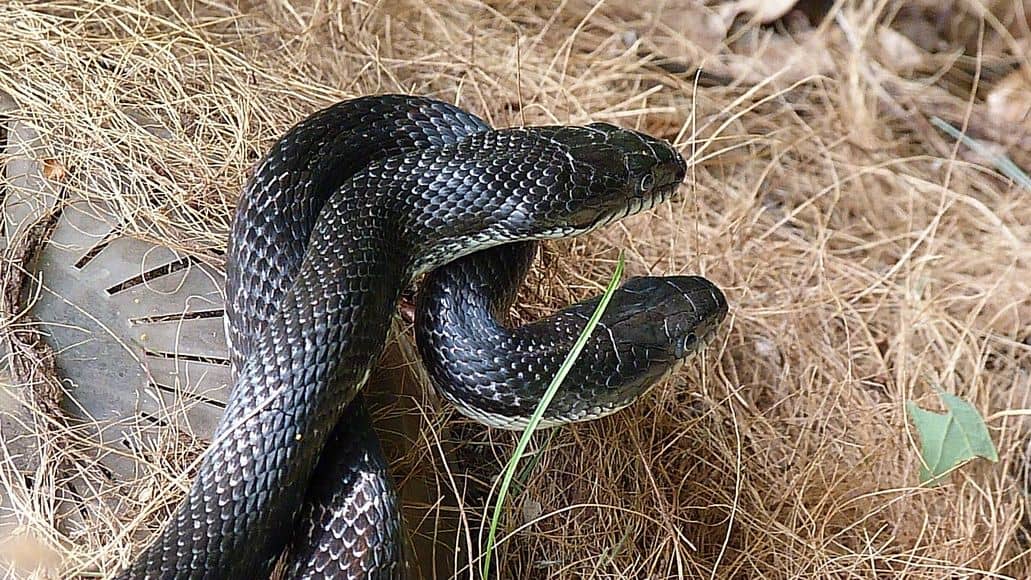
When mating time rolls around, you’ll find male snakes becoming more aggressive and fighting with each other to get the attention of the female.
When a female snake is ready to mate, she releases a special scent known as pheromones from the skin glands on her back. Wherever she goes, she leaves this enticing aroma for the males.
If a sexually mature males catches this scent, he will follow her trail. He’ll know she is ready to mate because she lifts her tail. He then wraps his tail around hers and the bottoms of their tails meet at the cloaca. Inserting his hemipenes, he releases sperm.
This cloaca is an opening for the snake to excrete fluid and feces, but it is also where reproductive activities occur. When male snakes aren’t mating, the hemipenes is inverted and rests in the cloaca.
Induce Mating With An Artificial Winter
Whichever snake breed you have, you need to prepare them for breeding. This includes giving your snakes the right amount of heat. These temperatures are usually between 85° to 100° F. The reproductive cycle of many snakes is prompted by the temperatures they experience.
To induce breeding, many species of snake need to go through brumation which is basically hibernation for snakes. Brumation is not essential for breeding in captivity, but it can help, since it mimics the natural life cycle of the snake.
Snakes usually become sexually active after coming out of hibernation, when temperatures start to rise. To get snakes to mate in captivity, providing them with winter-like temperatures and then warming them again can help.
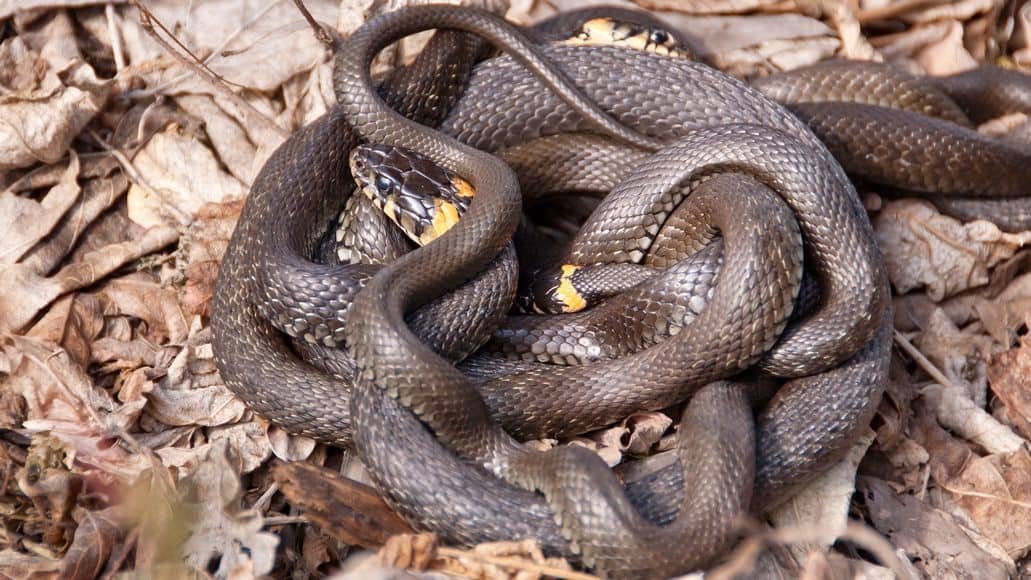
To prepare snakes for breeding you need to first separate the sexes. A couple of weeks before this ‘hibernation’ or cooling time, you should also stop feeding your snakes. They should have no food remaining in their stomachs or it will begin to rot during hibernation.
Once they have excreted all remaining waste, you can lower daytime temperatures to 75 to 83°F and nighttime temperatures between 70 and 73°F. Note that ideal temperatures vary by species, so be sure to do your research. Maintain these cooler temperatures for 90 days.
During hibernation, continued darkness is best, and snakes in hibernation shouldn’t be fed at all. This is why it is important to feed them well before they are cooled for the winter.
After the first post-hibernation shed, the female snake can be placed in the male’s cage. A gentle misting to mimic the first spring showers can be effective in stimulating your snakes’ reproductive behavior.
Length Of Snake Pregnancies
After successful mating, the next question is “how long is the pregnancy of a snake?”, and the answer is that gestation varies. It depends on the snake breed. Some snakes gestate for 3 months while others, such as the copperheads, gestate for 3 to 9 months.
♦ Rattlesnake: 167 days
♦ King Cobra: 50 to 59 days
♦ Ball Python: 44 to 54 days
♦ Anaconda: 6 to 7 months
Make Sure Your Snakes Are Properly Sexed
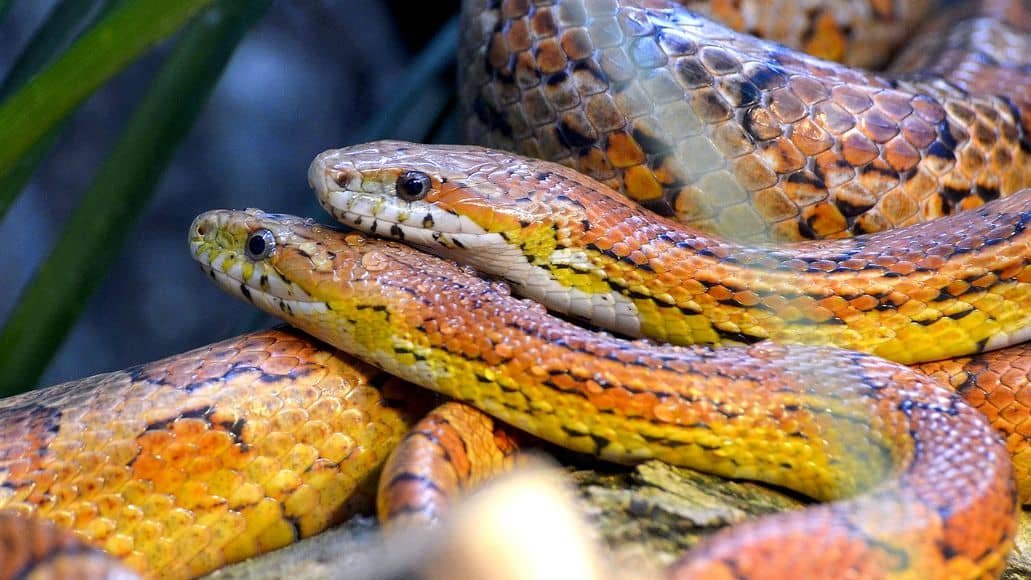
Many snakes make excellent pets, being quiet for those living in apartments who want to keep a pet. They all differ in size and temperament and the lifespan of snakes in captivity is also variable.
How to breed snakes is something that every novice snake owner eventually wants to know. After you feel you have the best pair of snakes for breeding, you will need to be 100% sure that the snakes are properly sexed before continuing with your breeding efforts.
You will need to be sure you have a male and a female. To determine the sex of the snake, a process called probing is performed.
Hazards Of Breeding Snakes
Breeding any snake can be a complex process, but rewarding. It requires knowledge, because there are definitely some hazards with breeding.
There are some snakes, for instance, that give birth to live young. These tiny snakes will need to be moved to their own enclosures after birth. A snake rack is good for this. Some of them are as poisonous as their parents, with venom that contains neurotoxins that can cause death.
Breeding can also take its toll on the health of your snake. With the laying process, the weight of the snake can be seriously affected and she can be more prone to the disease at this time.
When getting your first snake, learn all you can about it. There are a number of good beginner snakes with docile temperaments. The corn snake and kingsnake are good examples.
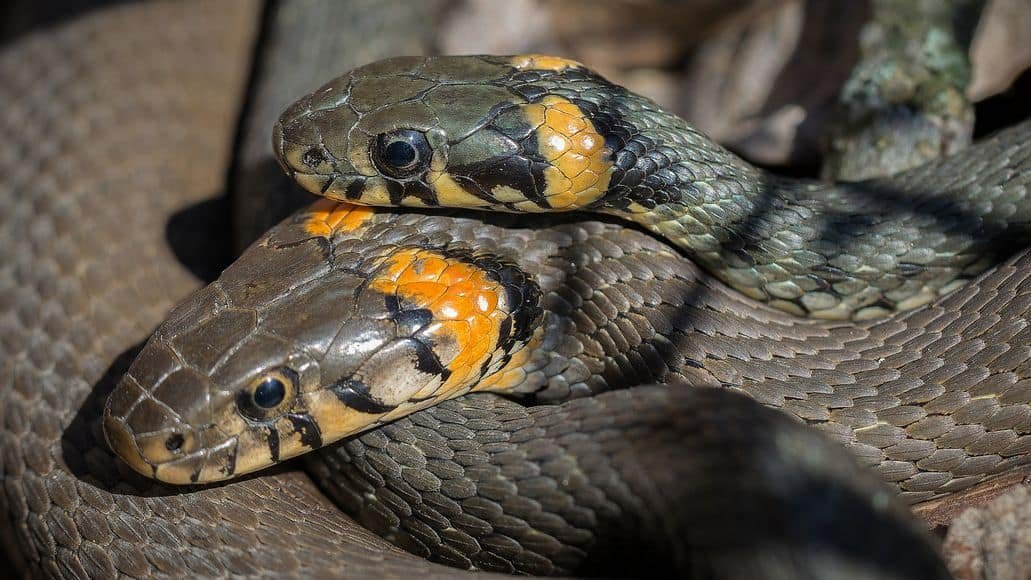
Mixed Breeding – Does it Happen?
Another question people have with snakes is “can one species of snake mate with another species?” For instance, can black rat snakes mate with copperheads?
If you do research online, you’ll find video footage of two snakes of different species fighting—a cottonmouth and a copperhead. These are both venomous snakes which come from the American Southeast. People have witnessed these snakes wrestling with each other competing for females.
Cottonmouths and copperheads are members of the same genus. They are closely related and have been known to mate and bring forth hybrid young.
With black snakes and copperheads, however, crossbreeding is impossible.
This is because:
- These two snake varieties are of different species.
- Chromosome count is important with breeding and the black snake’s cells differ from those of the copperhead in the number of chromosomes.
- Black snakes are egg laying snakes while Copperheads give birth to live young
Another example: when you do research on snakes like the king cobra mating with other snakes, there is no scientific data supporting hybridization between this particular cobra and other snake species.
Can Venomous Snakes Crossbreed?
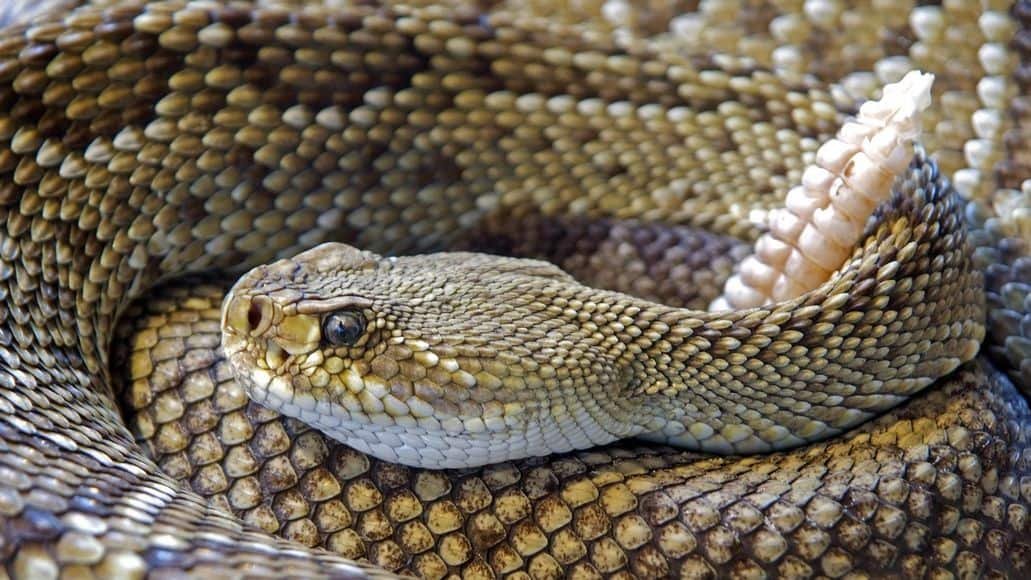
In the animal kingdom, only animals of the same species breed together. When animals are very similar, animals of different species can occasionally mate.
But there are limitations to which species can actually interbreed. When it happens, the offspring are known as hybrids or crossbreeds. Very often these hybrids are sterile.
Species that can interbreed belong to the same genus. A typical example of this is horses and donkeys. In other cases though, two species can belong to different genera, but still breed. In these cases they’re part of the same family.
There are always people trying to stir up sensational stories about snakes interbreeding but hardly any of them have been confirmed.
“Can the king cobra mate with other snakes?” is a very common question, for example. The answer to this question is a firm “no.” Cobras can’t interbreed at all. Even closely related species are unlikely to interbreed, either in the wild or in captivity.
Two Closely Related Snakes Can Breed
According to the Journal of Herpetology, bull snakes and fox snakes, two colubrids, have been known actually to interbreed in the wild, even though they belong to different genera. This is rare.
It is possible, but highly unlikely, that similar snake species interbreed in the wild. But in captivity, you can often make it happen. There are some snake owners who have successfully bred, for instance, kingsnakes with corn snakes. Their offspring have been fertile.
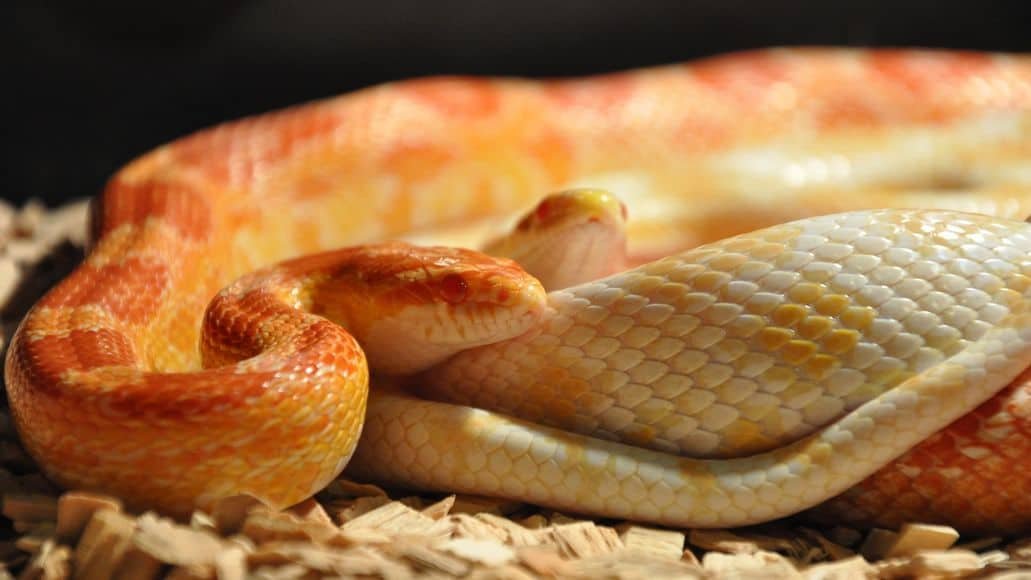
Since we just mentioned bull snakes above, we come back to the question “can venomous snakes like the rattlesnake cross breed with bull snakes?”
Rattlesnakes are venomous and they’re members of the same genus, being genetically very similar to one another. It has been scientifically documented that certain species have in fact interbred, but once again in captivity and in a laboratory.
They would not likely breed in the wild. There are no documented cases of a rattlesnake breeding with another kind of snake – venomous or non-venomous. They aren’t similar enough to other kinds of snakes to breed with them.
When it comes to bull snakes, or other snakes in a different family, it will never happen.
Snakes in different families can’t interbreed and you will never find a colubrid breeding with a viper, for example. You also won’t find a venomous snake breeding with a non-venomous snake.
Breeding Snakes: Final Thoughts
Breeding snakes requires you learning all you can about these reptiles: disease prevention, what equipment is necessary, feeding, heat and light, how they mate, how they give birth, etc.
As a novice, breeding snakes will require you keeping notes of different details about your snakes. The animals themselves will need to be in good condition and mature enough for breeding.
Successful breeding of snakes relies on quite a few factors and isn’t always simply a case of putting the male and female together (though it sometimes is just that simple). There is science to snake breeding and you’re going to have to do thorough research to be successful at it.
Leave a Reply